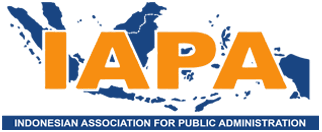Public Transport in Developing Countries
DOI:
https://doi.org/10.21776/ub.jpas.2021.006.02.7Keywords:
public transport, developing countries, characteristicsAbstract
The changes and challenges in public transport in developing countries are need to be address with the right policy, yet to make the right policy, we need to identify the main problem and characteristics of public transport in developing countries itself. This article explain the characteristics of public transportation in developing countries using literature review. In general, it is based on its organization, multimodal transport planning and finance, fare control, fare exemptions and social obligations, vehicle specifications, competition and regulation and finally ownership and investment.
References
Abd-Rahman, N. A. & Abdullah, Y. A., (2016). Theorizing the Concept of Urban Public Transportation Institutional Framework in Malaysia. MATEC Web of Conferences, 66(00043).
Armstrong-Wright, A. & Thiriez, S., (1987). Bus Services Reducing Costs, Raising Standards. The World Bank.
Gwilliam, K., (2000). Public Transport in the Developing World Quo Vadis?. World Bank Discussion Paper TWU, Volume 39.
Hernáiz, H. P. & Smilde, D., (2018). Venezuela's Public Transportation Crisis - Venezuelan Politics and Human Rights. [Online] Available at: https://venezuelablog.org/venezuelas-public-transportation-crisis/ [Accessed 11 March 2019].
Iles, R., (2005). Public Transport in Developing Countries. Oxford: Elsevier Ltd..
Jirón, P., (2013). Sustainable Urban Mobility in Latin America and the Caribbean, GRHS.
Lucas, K., (2004). Transport and social exclusion. In: K. Lucas, ed. Running on Empty: Transport, social exclusion and environmental justice. The Policy Press.
Meyer, M. D., (2016). Transportation planning handbook. Wiley.
Mijares, A. C., Regmi, M. B. & Yai, T., (2014). Enhancing the sustainability and inclusiveness of the Metro Manila’s urban transportation systems: Proposed fare and policy reforms. Transport and Communications Bulletin for Asia and the Pacific, 84(2) 28-40.
Muromachi, Y. et al., (2015). A Comparative Study on Road-based Urban Public Transport Policies in Six Asian Countries from the Viewpoint of Governance, Urban Planning, and Financial Aspects. Journal of the Eastern Asia Society for Transportation Studies, 11(2) 1433-1450.
Oliveira, L. K. et al., (2018). An Overview of Problems and Solutions for Urban Freight Transport in Brazilian Cities. Sustainability, 10(1233)12-18.
Pettersson, F., Westerdahl, S. & Hansson, J., (2018). Learning through collaboration in the Swedish public transport sector? Coproduction through guidelines and living labs. Research in Transportation Economics, 69(9) 394-401.
Pojani, D. & Staed, D., (2015). Sustainable Urban Transport in the Developing World: Beyond Megacities. Sustainability, 7(7)7784-7805.
Ramli, R., Palil, M. R., Abu Hassan, N. S. & Mustapha, A. F., (2012). Improving The Use of Public Transport in South East Asian Countries: Do Taxes and Other Economic Instruments Play A Role?. Bandung SN.
Rodrigue, J.-P., Comtois, C. & Slack, B., (2013). The Geography of Transport System. Routledge.
Verma, A. & Ramanayya, T. V., (2015). Public Transport Planning and Management in Developing Countries. CRC Press.
Downloads
Published
Issue
Section
License
Copyright Statement
Authors who publish with JPAS agree to the following terms:
(1). Authors retain copyright and grant the journal right of first publication with the work simultaneously licensed under a Creative Commons Attribution License that allows others to share the work with an acknowledgement of the work's authorship and initial publication in this journal.
(2). Authors are able to enter into separate, additional contractual arrangements for the non-exclusive distribution of the journal's published version of the work (e.g., post it to an institutional repository or publish it in a book), with an acknowledgement of its initial publication in this journal.
(3). Authors are permitted and encouraged to post their work online (e.g., in institutional repositories or on their website) prior to and during the submission process, as it can lead to productive exchanges, as well as earlier and greater citation of published work (See The Effect of Open Access).
Permissions and reuse
For authors
Authors may use their own articles for the following non-commercial purposes without asking our permission (and subject only to acknowledging first publication in JPAS and giving a full reference or web link, as appropriate).
(1). Posting a pdf of their own article on their own personal or institutional website, for which no charge for access is made.
(2). Making a reasonable number of copies for personal or non commercial professional use.
This includes the contributors own teaching purposes.
(1). Republishing part or all of the article in a book or other publication edited by the author (except for multiple contributions in the same book or publication, for which permission needs to be sought.
(2). Using individual figures or tables or extracts of text (up to 300 words) in other publications published by a third party.
(3). Using the article in a course pack or compilation (whether paper or electronic) in the authors institution. This does not apply if a commercial charge is made for the compilation or training programme.
For third parties
All articles published by JPAS are published by default as open access.















